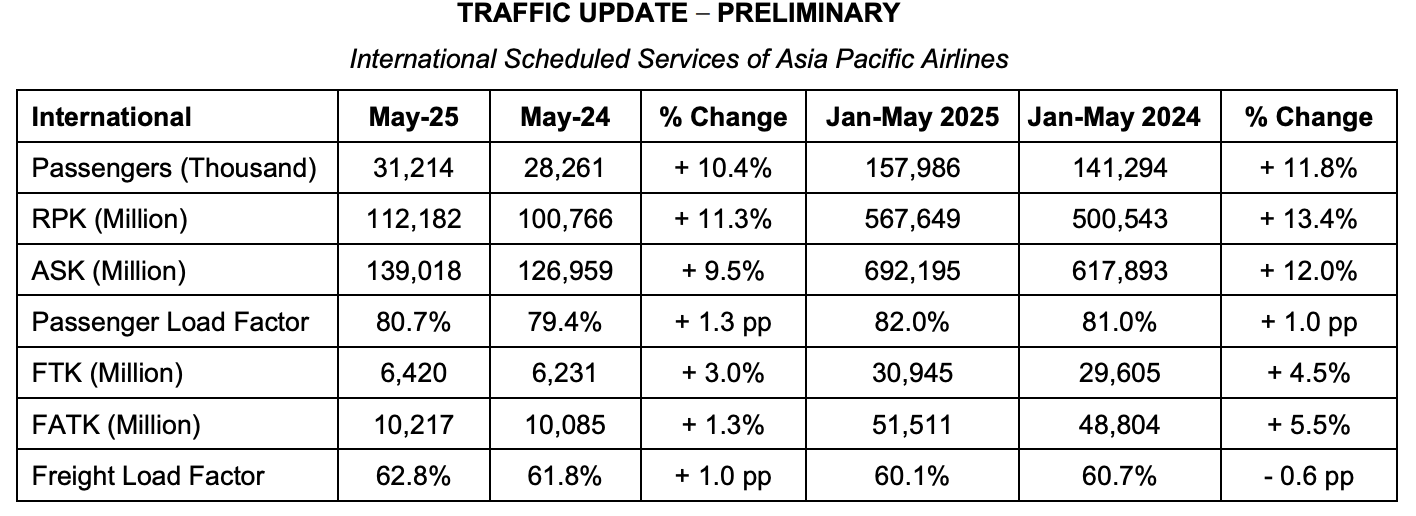Airlines in Asia Pacific saw continued cargo growth in May, driven by frontloading ahead of the expiration of the US-China tariff pause, though momentum has started to ease.
Traffic figures released by the Kuala Lumpur-based Association of Asia Pacific Airlines (AAPA) showed that international air cargo demand — measured in freight tonne-kilometers (FTK) — was up 3% year-on-year last month.
May's 6.42 million tonnes of air freight volume was also slightly better month-on-month when FTK was up 4.9% in April at 6.24 million tonnes.

[Source: AAPA]
"Air cargo markets also posted further gains, although the pace of growth moderated due to weaker export activity from key manufacturing economies," AAPA said in its latest report.
"Weaker export volumes on the US–China route, partly due to the removal of tax-free exemptions for low-value goods, were offset by increased shipments to other markets," it added.
AAPA said offered freight capacity rose by 1.3% year-on-year, resulting in a 1.0 percentage point increase in the average international freight load factor to 62.8% for the month.
"In the air cargo markets, international freight demand registered 4.5% growth, supported by front-loading of shipments and rerouting of goods to other gateways amidst mounting economic headwinds," said Subhas Menon, AAPA Director General.
Looking ahead, the AAPA chief warned of continued volatility as tensions continue to rise, particularly in the Middle East.
"Continued improvements in air connectivity are expected to support growth in travel demand. Nevertheless, Asia Pacific carriers face an increasingly challenging operating environment, shaped by rising trade and geopolitical tensions, persistent supply chain constraints, and more frequent overflight diversions due to airspace closures in conflict zones," he said. "In addition, fuel prices may remain volatile if the Middle East conflict prolongs."
"Meanwhile, air cargo markets are expected to come under pressure from weakening export orders, although shifts in trade routes could help mitigate some of the impact," Menon added, noting that overall, however, the region's carriers are well-placed to adapt to evolving market conditions, supported by strong regional economies that are expanding in tandem with their aviation markets.